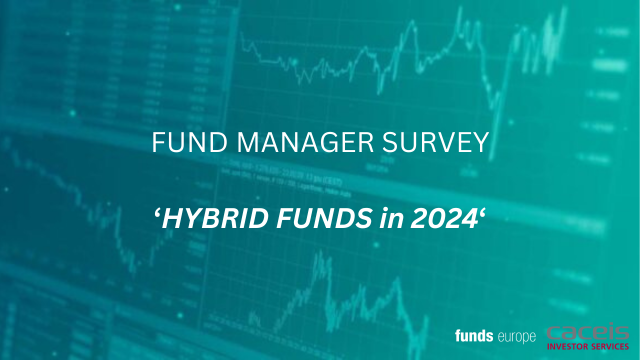Issuance may be lower but the fortunes of social bonds are still high enough to potentially see a more rapid switch compared to green bonds from institutional money to retail money, finds Piyasi Mitra.
The European social bonds market has soared to €464 billion, according to a recent survey by Goldman Sachs Asset Management (GSAM). With approximately 65% of investors actively allocating or expressing a growing interest in social bonds, this asset class has emerged as a powerful force in the wake of the Coronavirus pandemic. Yet, as the spotlight extends from environmental issues to pressing societal challenges, one question prevails: is this asset class here to stay?
Growth trajectory
The total value of outstanding social bonds is about €530 billion now – approximately 60% of which are of European origin, highlights Doug Farquhar, lead portfolio manager for green, social and impact bonds at GSAM.
Despite the growth, it is still below the record level of 2021. According to Farquhar: “We have seen higher social bond issuance in HI 2023 than in 2022 and our forecast this year was to see around €200 billion of social bonds being issued. We’ve already seen around €70 billion in issuance in the first half of the year, but don’t see the figure touching 200 billion this year. However, the asset class’s growth will continue.”
The market can only attain long-term growth by adopting “standards, definitions and data”, Farquhar emphasises – the same factors in focus for the early years of the green bonds market.
For social bonds, issuers would need definitions of specific populations involved in the social projects they are financing, he shares, citing how definitions of people living below the poverty line vary.
“Roughly 70% of social bonds owe their origin to government-related issuers,” Farquhar points out, making it “challenging” for corporate issuers to define purely social projects. “Well-defined social projects can facilitate corporate presence to grow over time for long-term growth.”
Top challenges
Fabien Collado, ESG portfolio manager at Insight Investment, said there was a slowdown in green, social and other sustainability-labelled debt new issuance in the second half of 2022. This resulted in a fall in year-on-year growth, from the record in 2021, from around $1.8 trillion to $1.5 trillion, globally.
“These trends have continued in 2023, with a return to year-on-year issuance growth, albeit with a growing focus on quality over quantity of holdings because of heightened regulatory and investor scrutiny, particularly in Europe,” adds Collado.
“The switch from institutional to retail is likely to occur slightly earlier and faster than what we observed in the green bond space.”
Transparency down to the individual project level is another challenge often found in government-related issues, adds Farquhar. “Many social bond finances go into national balance sheets and are distributed via local government. Therefore, we don’t always see the same level of transparency and granularity in social impact reporting as in green bonds. Developing frameworks for social impact will help the transparency and reliability of social data in the long term,” he adds.
Also lacking is baseline data essential for tracking progress. For instance, the baseline year for the green bond market for measuring greenhouse gas reductions with a view towards net zero by 2050 was the 1990s.
Isabelle Vic-Philippe, head of euro aggregate at fund manager Amundi, highlights that generally, social issuance remains majority related to governments and public sectors, making it difficult for corporations and banks to link their for-profit activities with social features.
Additionally, categories have often been related to affordable housing, job support, education and health since 2022. “2023 so far has not seen any noticeable change and should continue this way. This remains a limited part of the overall green, social and sustainability market,” says Vic-Philippe.
Issuers are also mixing green and social projects, such as multilateral development banks or government entities, which leads to fewer dedicated social issuances, she says.
“Selection criteria are also more challenging to assess for social projects, especially in the case of governments and regions, while multilateral development banks have a clear process for project selection.”
The lack of common KPIs with uniform calculation standards and lack of pro-rata data could make it time-consuming to gather impact data. “A push for social taxonomy will be a positive outcome for the market as the green is helping investors assess the quality of the social projects financed and with limited externalities.”
Overweight sectors
GSAM owns a dedicated social fund bond launched in 2021 and has traditionally been overweight on government-owned non-guarantees. Farquhar describes the sector as “quite active” in the social bonds category.
More corporate issuance would mean more spread opportunities, Farquhar reasons, which would likely bring down the benchmark’s duration.
“At a minimum, having a finalised and agreed-upon taxonomy can help issuers align their use of proceeds with those objectives and help investors gauge the strength of the social bond on a comparative basis.”
“Governments tend to issue green and social bonds and longer maturity, corporate issuers more into intermediates. From an asset class and investor standpoint, more corporate issuance for the spreads will facilitate diversification and impact duration.”
Farquhar also acknowledges how social bonds issued by European supranational organisations have created a “good base” for social bond issuance. “The credit quality has been good, so has the types of social projects financed– be it employment generation or higher quality jobs.”
He also acknowledges better support at a federal level for social bonds in the US compared to Europe, thanks to defined federal programs around social housing that issuers can use in their social bonds. Farquhar finds it “encouraging” to see the allocation of proceeds from those Asia supranational issues on the social mobility side.
The “definitions first” approach is pivotal for project assessment, and the development of academic research methodologies can help achieve this goal, he adds.
Roadmap ahead
According to Collado, while green bonds are still the preferred instruments of choice, the evolution of both sustainability and social bond markets has paved the way for impact investors to reach new impact themes while increasing portfolio diversification levels.
The push towards greater transparency and standardisation should be supportive of “use-of-proceeds structures” – such as green bonds, where proceeds are used for ‘green’ projects – at the expense of more flexible structures, such as sustainability-linked bonds.
Collado says: “It will be key for governments and regulators to establish sector roadmaps and standards, such as ones in line with the [EU’s] social taxonomy proposal, for example, for social project financing to try and encourage more issuance in line with rising demand.
“However, one challenge is that the nature and outcomes of many social projects relating to public good fall outside the issuer’s direct control, for example, employment, health and wellbeing projects.”
Cameron Brandt, director of research at EPFR, which provided fund flow data, shares that European bond funds with socially responsible investment (SRI) or ESG mandates are a part of the demand picture for European green bonds in primary and secondary markets.
According to Brandt, “a drop-off inflow is a headwind for new issuance”. He said this had been the trend since flows into Europe SRI/ESG bond funds peaked in the late part of the first quarter in 2021.
An increase in inflows during the third quarter owes something to the modest collective outperformance that Europe SRI/ESG bond funds have achieved so far this year relative to their non-SRI/ESG counterparts, says Brandt.
“At the country level, investors have, over the past 20 months, shown a preference for exposure to Spanish, Swedish and Swiss SRI/ESG debt,” he adds.
Philipp Buff, portfolio manager of Pictet-Global Sustainable Credit at Pictet Asset Management, cites that social-bonds issuance is down by about 18% in 2023 compared to 2022 – better than sustainability bonds but less than green bonds. From a capital-expenditure perspective, most issuers are more comfortable allocating it to green projects. “Both frameworks need to co-exist in the future and should be equally important in the sustainability journey of a company,” says Buff.
Asian edge
Farquhar observes distinctions in two currencies between the green bond market and the social bond market – Korea and Japan. “The yen is one of the most underrepresented currencies in green bonds with approximately €40 billion of yen-denominated social bonds.”
Asian social bond issuers have come to the forefront recently, especially in the banking and transportation sectors. “Despite social bonds having been dominated by the American dollar and euro currencies, we have seen an uptick in Japanese yen issuance this year. We would not be surprised if other currencies join soon,” says Buff.
Regionally speaking, the UK lags in this frontier, just as it does in the green bond market. Under 2% of all social bonds are issued in sterling, but Farquhar expects to see development in future years.
“Social washing”
A key challenge is comparing the use of proceeds, says Buff, who says focusing solely on the use of proceeds in social bonds analysis would be imprudent. Instead, the sustainability trajectory of the company is key, he says, and he also believes having a social taxonomy alone would not be enough, as evidenced by the EU launching the EU Green Bond Standards.
Begum Gursoy, associate director of debt capital markets and sustainable finance at Morningstar Sustainalytics, argues that failure to measure the genuine social impact of a project accurately increases “social washing” risks. Under such a situation, projects may be exaggerated to give inflated perceptions of social impact.
“The EU’s social taxonomy will also likely lead to more comprehensive reporting and greater alignment with the broader EU regulations. If realised, this could propel issuers of social bonds to provide more standardised and comprehensive reporting on the social impact of their projects…”
However, challenges could arise in defining criteria and balancing specificity with flexibility – given that all jurisdictions face different socioeconomic challenges.
© 2023 funds europe





